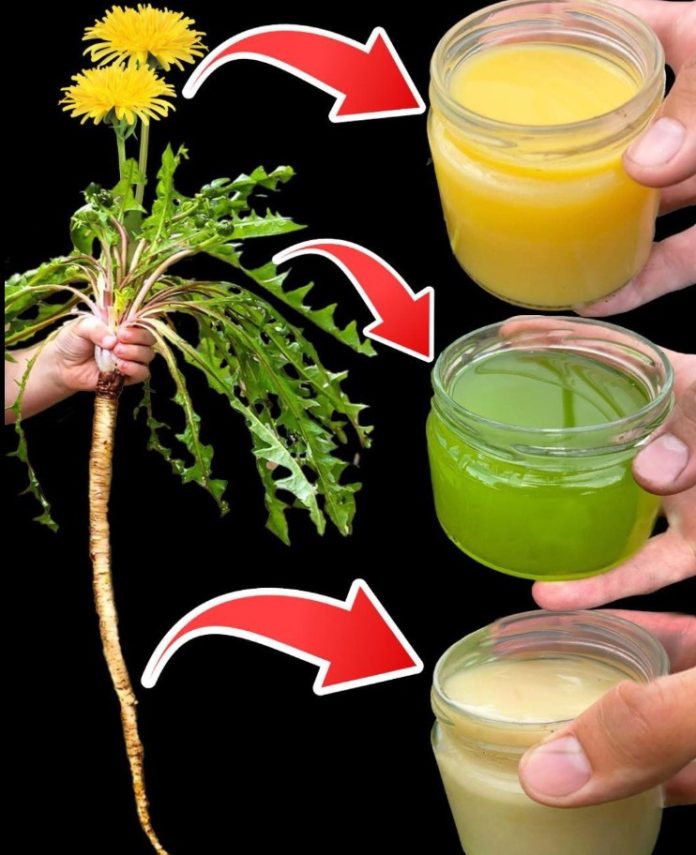Often overlooked and dismissed as a mere weed, the dandelion (Taraxacum officinale) is a remarkable plant packed with nutrients and medicinal properties. This resilient yellow flower, with its jagged green leaves and fluffy seed heads, thrives in gardens and sidewalks alike, yet it is far more than just a nuisance to gardeners. From root to petal, dandelions offer a treasure trove of culinary and health benefits that have been celebrated in various cultures for centuries.
This article explores the multifaceted uses of dandelions, focusing on a delightful recipe that showcases their unique flavors while highlighting the plant’s numerous advantages.
The Nutritional Powerhouse
Dandelions are rich in vitamins A, C, and K, as well as essential minerals like iron, calcium, and potassium. Their leaves can be consumed fresh in salads or cooked, while the roots can be roasted and ground into a caffeine-free coffee substitute. The flowers, bright and cheerful, can be used to create a sweet syrup or infused into oils and vinegars. Beyond their culinary versatility, dandelions have been used in traditional medicine to promote digestion, reduce inflammation, and support liver health.
Recipe: Dandelion Salad with Honey-Lemon Vinaigrette
Ingredients:
For the Salad:
- 4 cups young dandelion greens (make sure they’re harvested from pesticide-free areas)
- 1 cup cherry tomatoes, halved
- 1/2 cucumber, thinly sliced
- 1/4 red onion, thinly sliced
- 1/4 cup crumbled feta cheese (optional)
- 1/4 cup walnuts or pecans, chopped
- Fresh herbs (such as parsley or chives), for garnish
For the Honey-Lemon Vinaigrette:
- 3 tablespoons olive oil
- 1 tablespoon honey
- Juice of 1 lemon
- Salt and pepper, to taste
Directions:
- Harvesting the Greens: Begin by carefully picking young dandelion greens. Look for tender leaves, which are less bitter than older ones. Rinse them thoroughly under cold water to remove any dirt or insects. Pat them dry with a clean towel.
- Preparing the Salad: In a large mixing bowl, combine the dandelion greens, cherry tomatoes, cucumber, and red onion. If you’re using feta cheese and nuts, add them in at this stage for an extra layer of flavor and texture.
- Making the Vinaigrette: In a small bowl or jar, whisk together the olive oil, honey, lemon juice, salt, and pepper until well combined. The honey adds a touch of sweetness that balances the dandelion greens’ slight bitterness.
- Assembling the Dish: Drizzle the vinaigrette over the salad just before serving. Toss gently to coat all the ingredients evenly. Garnish with fresh herbs for an added burst of flavor.
- Serving Suggestions: This vibrant salad pairs beautifully with grilled chicken or fish and can serve as a light meal or side dish. The dandelion greens bring an earthy, slightly peppery flavor that is both refreshing and satisfying.
Conclusion :
The mighty dandelion, often dismissed as a mere weed, is indeed a hidden treasure of nature, bursting with potential and rich in nutrients. Its multifaceted uses extend far beyond the garden, proving that this resilient plant has much to offer in terms of health and culinary delight. By incorporating dandelion greens into a fresh salad with a delightful honey-lemon vinaigrette, we not only celebrate its unique taste but also harness its remarkable health benefits.
In our modern world, where convenience often trumps nutrition, it’s essential to reconnect with nature and rediscover the bounty it offers. Dandelions remind us that wellness can come from simple, accessible sources. Whether enjoyed fresh, brewed, or infused, these greens can enhance our diets with vitamins, minerals, and antioxidants that promote overall well-being.
Moreover, the act of foraging for dandelions can foster a deeper appreciation for our surroundings. It encourages us to look at our environment with fresh eyes, transforming our perception of common plants. By embracing dandelions, we champion sustainability and resourcefulness, reducing food waste and supporting biodiversity.
As we continue to explore the culinary possibilities that dandelions present, we invite you to experiment with this versatile plant in your kitchen. From salads to teas, syrups, and beyond, the dandelion can be a delicious and nutritious addition to your meals. So the next time you spot a field of bright yellow flowers, remember: it’s not just a weed; it’s a powerful ally in your pursuit of wellness and flavor. Embrace this wild, resilient plant, and discover the incredible gifts it has to offer. By celebrating the mighty dandelion, we not only enrich our palates but also deepen our connection to the natural world, fostering a lifestyle that honors health, sustainability, and the wonders of nature.
Source of the picture : Barbara O’Neill Lectures










